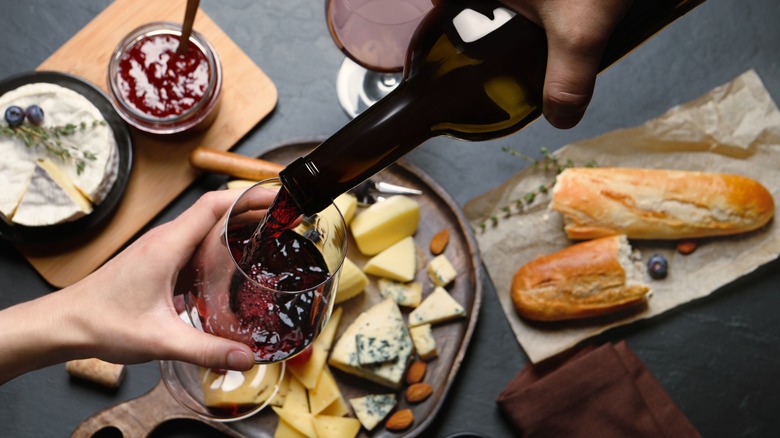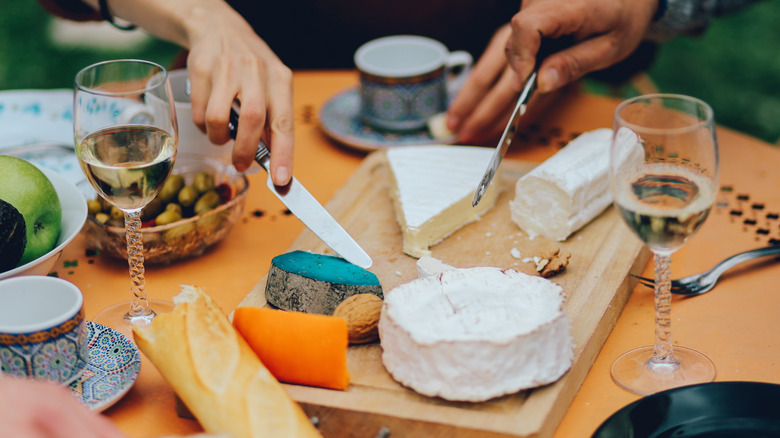The Wine Pairing Mistake You May Be Making With Fresh Cheese
The art of pairing cheese with wine has long been a subject of fascination and exploration for culinary enthusiasts. While many factors contribute to the success of the dynamic duo, one key element often discussed is the texture of the cheese. To delve into the topic, Mashed spoke with Chad Galer, an expert known as "The Cheese Guy."
Galer, whose extensive background includes dairy farming, microbiology, and international cheese competitions, offers a refreshing perspective on this matter. Contrary to popular belief, he asserts that while cheese's texture — whether creamy, gritty, chewy, flaky, firm, what have you — can influence the tasting experience, it is not always the paramount component in successful cheese and wine combinations. "In my opinion cheese and beverage pairings are more about the flavor and the texture is not as critical, unless that texture takes away from the flavor pairing," he says.
One of Galer's textural concerns is the presence of grittiness in cheese. "[This] could be from condiments or spices that are added to a cheese or sometimes extra-aged cheeses can develop some grittiness," he explains. A grainy finish can be a disruption, as the sensation on the palate can draw away from the characters of both the fromage and the vino. Galer's emphasis on flavor harmony remains central, but he emphasizes that an undesirable texture should not overshadow any particular taste.
Pairings to be wary of
Cheese expert Chad Galer also notes the potential challenges posed by highly acidic wines — including several varieties of red, white, rosé, and sparkling — particularly when coupled with soft, fresh cheeses that tend to have a higher moisture content (Think mascarpone, chèvre, or boursin). This perspective reinforces the idea that texture should be viewed through the lens of flavor affinity. If a cheese's consistency clashes with the drink's innate acidity, it can spoil the intended matchup.
When it comes to cheese and wine, texture really only becomes a significant element when it interferes with the intended flavor pairing, such as in cases of grittiness or when wines on the tart end of the spectrum cause things to go sour — literally and figuratively.
Galer's turophilic insights encourage a pleasant, balanced approach to cheese and wine pairings, where texture is just one part of the gastronomic journey. Turns out, the interplay between the beloved dairy product and fermented grape juice is a lot more intricate than many of us give it credit for.

